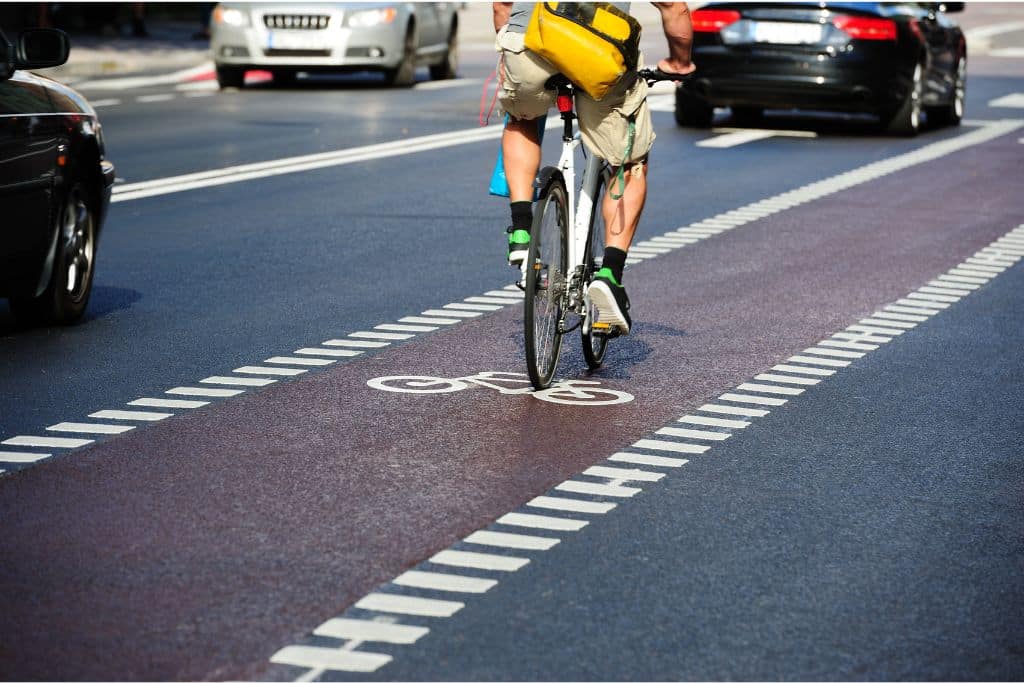Small changes can have a large effect. In the latest article for Earth.Org’s ‘What Can I Do’ Series, we discuss four steps you can take to reduce your carbon footprint.
—
4 Easy Steps to Reduce Your Carbon Footprint in 2024
The National Oceanic and Atmospheric Administration’s (NOAA) Annual 2022 Global Climate Report showed that Northern and Southern Hemisphere surface temperatures were 1.10C and 0.61C above the 20th century average, respectively. The global increase in temperature emphasises the importance of reducing greenhouse gases (GHG) we release into our atmosphere. At the individual level, you can take action by altering your mindset, reducing energy usage, riding a bike, and taking part in “Meatless Mondays.”
Step 1. Alter Your Mindset
Alter your mindset by considering the life-cycle of products before you purchase them. The life-cycle of products go from manufacture, transportation, usage, and – if not reusable – disposal. By considering the life-cycle of a product, you recognise what it takes to get the product to you, how long it will last, and if you can repurpose it after its life-cycle. Considering the GHG emissions associated with the life-cycle of a product will help you make more conscious decisions.
Step 2. Reduce Energy Usage
You can reduce your energy usage by reducing the amount of heating and cooling you use. Air conditioning accounts for nearly 4% of global GHG emissions while heating accounts for 40% of energy-related GHG emissions. By setting your thermostat one degree celsius cooler in the winter and one degree celsius warmer in the summer, you reduce your carbon dioxide emissions by 340 kilogrammes. Not only that, but you can also save money on your energy bill.
More on the topic: Global Energy Crisis: 5 Ways To Save Energy This Year
Step 3. Consider Riding a Bike
On average, a gasoline car travelling 64 kilometres per day will emit 7,000 kilogrammes of carbon dioxide. An e-bike travelling the same distance will emit nearly 96% less. A manual bike travelling the same distance will emit even less than a car and e-bike. By choosing to ride a bike, you will reduce your carbon dioxide emission, the exercise may improve your health, and the commute might be faster than driving during high traffic times.
Step 4. Consider “Meatless Mondays”

Meatless Monday is an international campaign that encourages people to not eat meat on Mondays to improve their health and the health of the planet.
Your food choices impact the climate. Meat production makes up 60% of all GHG emissions from food production and about 35% of all global emission. These emissions are based on the entire food production, such as use of machinery to transport feed for animals and enteric fermentation from animals. Practising “Meatless Mondays” could decrease your meat intake, resulting in a reduced demand for meat and the GHG emissions associated with it.
More on the topic: 10 Interesting Plant-Based Food Facts That Will Blow Your Mind
Conclusion
These four steps can help you make conscious decisions, save you money on your energy bill, help you exercise, and promote vegetable creativity in the kitchen. While they might seem small, these actions can have a big impact.Taking steps to reduce your footprint will encourage others to do the same.
Curious what your total carbon footprint is? The Nature Conservancy has created a Carbon Footprint calculator.
You might also like: 5 Things You Can Do to Save the Ocean


















